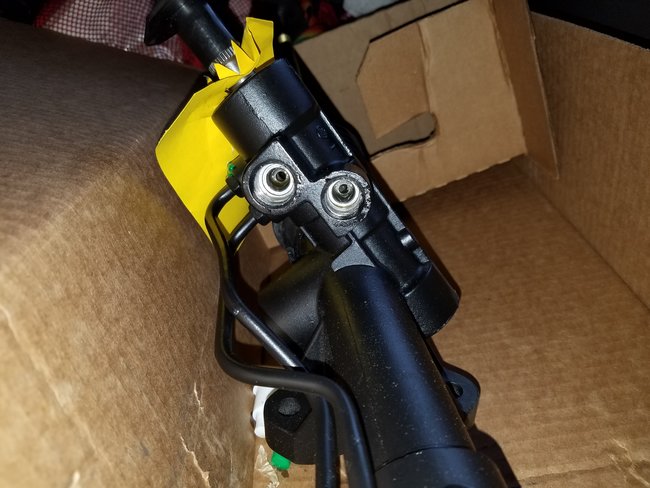What holes are you referring to? The two on the driver's side that bolt it to the cross member? There is going to be some clearance between them and the bolts. You do not want the threaded part of the bolts holding the rack from sliding back and forth. That would cause the holes to wear even more and you would be constantly correcting the direction of steering. Rather, it is the clamping forces of those two bolts that hold the rack in place. The two bolts on the passenger side do even less. The rack housing sits inside a rubber gasket that allows it to expand and move sideways a little. Those bolts are just there to hold the rack in position.
Chrysler has always been known for good parts interchangeability between years and models. The same steering gear might have been used on newer models, but with larger mounting bolts, and therefore, larger bolt holes. Rather than try to keep a lot of similar but different part numbers in stock, they would just rebuild the one that can be used in the most applications, or they may have drilled out the mounting holes so that part could be used on more applications.
Which seal is leaking? If the steering wheel is oscillating back and forth, it sounds like you have the high-pressure and return hoses switched. On everything I am familiar with, those two ports are different sizes, but I know there were some that were the same.
Be sure there is nothing blocking the return line to the power steering pump. If you disconnect that hose at the pump, you can drop the end down into a bucket, then run the engine for a few seconds. Fluid should pump into the bucket fairly quickly. Do not run the pump too long when it is empty. Doing so will overheat the front seal, then you'll be replacing that too.
Many rebuilders supply their rack and pinion assemblies with a filter that is supposed to be slid into the return hose for their warranty to take effect. If that was done previously, it may be plugged from metal chips.
The modifications you asked about was an issue with GM front-wheel-drive cars in the late 1980's and early 1990's. They had a real common problem we called "morning sickness" because when the power steering fluid was cold, usually first thing in the morning, you would experience loss of power steering assist in only one direction. If ignored, it affected the other direction weeks or months later. This was caused by the teflon sealing rings grinding into the soft aluminum housing and creating grooves that let the pressurized fluid bypass the power piston. The modification that all aftermarket rebuilders performed was to bore out the housing, then press in a stainless steel sleeve that was hard enough to withstand that wear from occurring. GM's fix was to ignore the cause, those grooves, and replace the spool valve with its new teflon rings. That was well-known to be a temporary solution, and was intended to get the car out of the 50,000-mile warranty. After that, when the problem occurred again, and it did on every car, it was the owner's responsibility to pay for the proper repair.
Morning sickness could occur on any car brand or model, but except for GM products, it happens to a very low percentage of cars. Still, when any rack and pinion assembly is sent back to be rebuilt, almost all of them get the stainless steel insert to insure that never happens to their products.
One more thing that should not be overlooked is rebuilt racks come with plugs in the ports to keep dirt out. Those are usually orange, red, or blue plastic cups that are pushed in, but they can also be threaded plastic plugs. I have seen twice where people forgot to remove one of those cups. Some of them do not have the flat strip in the middle for grabbing it. Some have to be picked at with a pick or small screwdriver, then they can be pulled out with a needle nose pliers. It is possible to thread in the soft metal nut on the steel line with those cups still in there. It may sound stupid, but be sure those cups have been removed.
Thursday, January 5th, 2017 AT 3:59 PM




